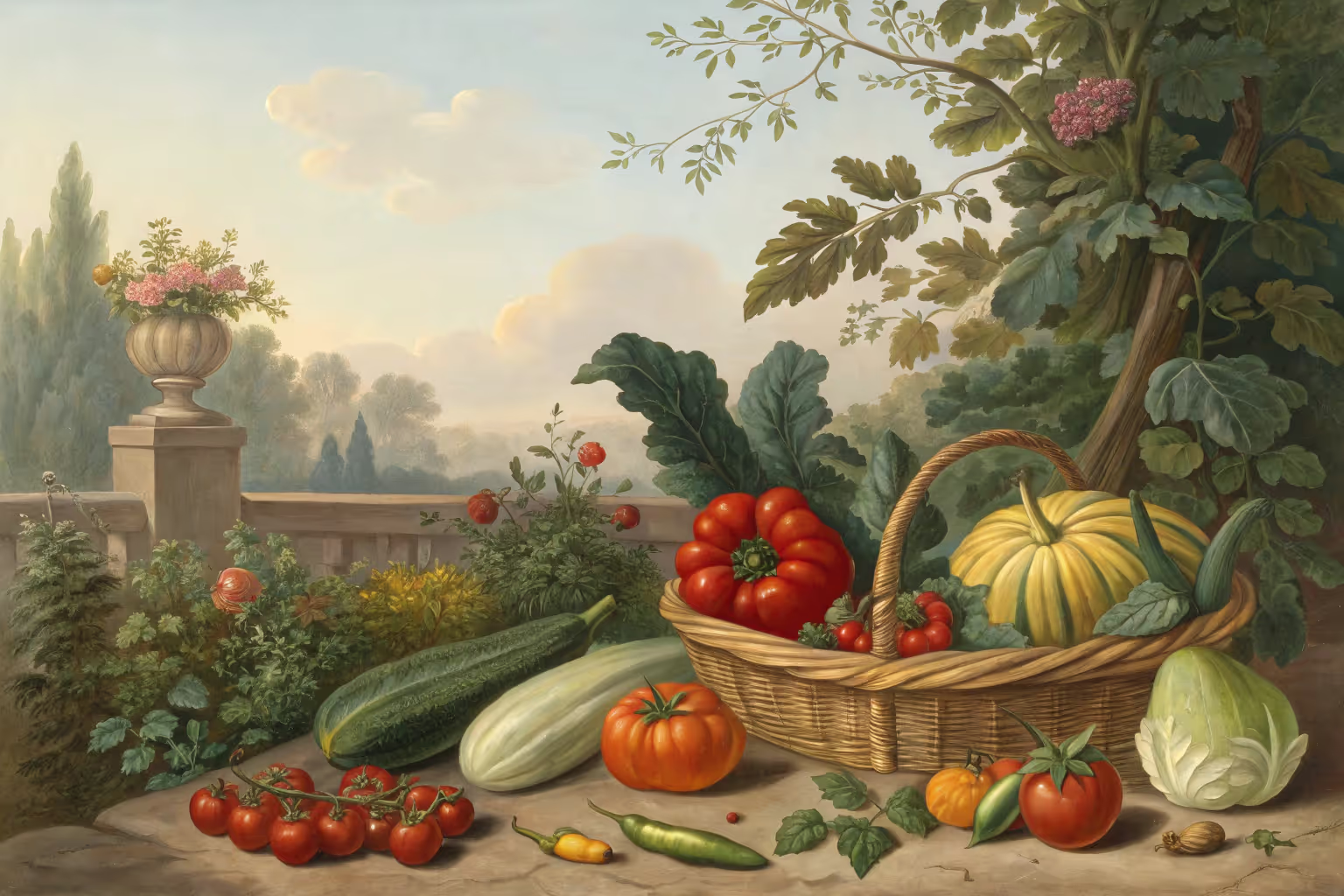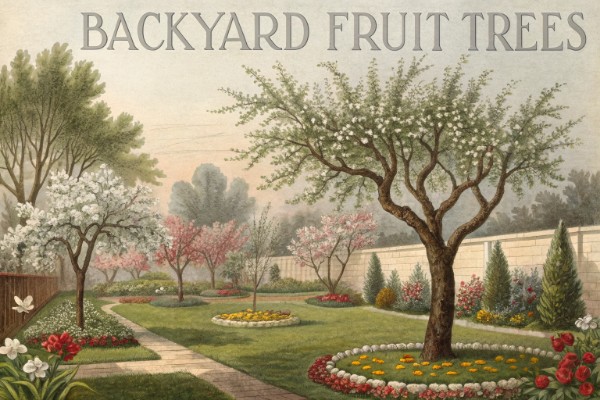Full Sun Vegetables to Grow for a Garden Full of Flavor

Full sun vegetables
Full sun vegetables soak up at least six solid hours of sunlight daily, producing bigger harvests with sharper flavors. Tomatoes, peppers, and cucumbers all belong to this sun-loving crew, thriving in bright spots with steady watering schedules. Follow a straightforward planting plan and pick the right varieties, and your backyard bounty will reward you all summer—keep reading to master the art of growing full sun vegetables effortlessly.
Cheatsheet: Grow Flavor-Packed Sun-Loving Vegetables
🌞 Top Flavorful Full Sun Vegetables
- Tomatoes (need 6–8+ hrs direct sun, 70–85°F / 21–29°C)
- Peppers (bell, hot)
- Eggplant
- Cucumbers
- Squash (zucchini, summer)
- Melons (cantaloupe, watermelon)
- Beans (bush, pole)
- Corn
- Okra
- Sweet Potatoes
📅 Planting Timing
Plant after last frost when soil reaches 60°F (16°C). Direct sow or transplant hardened seedlings.
🥗 Nutrition & Self-Sufficiency
- Tomatoes: 1 cup = 40% daily vitamin C
- Peppers: Vitamin C & antioxidants
- Beans: Protein + fiber
- Sweet Potatoes: Beta-carotene powerhouse
💧 Water & Soil
- Water deeply 1-2x/week. Aim for 1–1.5 in (2.5–4 cm).
- Use compost for rich, fast-draining soil.
- Mulch to retain moisture, block weeds.
🛠️ Tools and Products You'll Need
- Shovel, hoe
- Trowel
- Tomato cages or stakes
- Drip irrigation or soaker hose
- Mulch (straw, shredded bark)
- Compost or slow-release fertilizer
- Garden gloves
⚡ Key Growing Steps
- Pick a spot with 8+ hrs direct sun.
- Prepare soil: Dig in compost, loosen 12 in (30 cm) deep.
- Sow seeds or transplant seedlings. Keep 12–36 in (30–91 cm) apart, based on plant.
- Add supports for vining crops right away.
- Mulch, water consistently. Fertilize monthly if needed.
- Monitor pests. Hand-pick or use organic sprays if required.
- Harvest: Pick regularly to promote yield. Peak flavor: morning harvests.
Why full sun vegetables taste like summer on a fork
I have chased flavor across continents, yet a sun-warm tomato still wins, with juice that hits like a brass section. Light drives sugars, acids, aromas, and pigments that make dinner memorable.
Full sun vegetables perform best with intense, direct light that fuels photosynthesis and ripening. The right exposure concentrates sugars and volatile compounds while tightening texture.
"Full sun means at least 6 hours of direct sunlight per day, and many vegetables prefer 8." Source: University of Minnesota Extension and RHS.
How much sun actually counts, and why it matters
I clock light with a cheap watch and a habit, not an app. Six hours is the floor, eight to ten hours builds flavor, and midday light has the most punch.
Strong light boosts lycopene in tomatoes and capsaicinoids in peppers. Shade softens flavor and reduces color saturation.
Plant for the arc of the sun. Tall crops on the north side protect compact plants without stealing light.
Rows set north to south get even light on both sides. East to west rows cast long afternoon shadows that can shortchange yields.
Top 12 full sun vegetables I grow for unapologetic flavor
Tomatoes
Indeterminate vines give continuous harvest and richer flavor if you trellis them to full light. I aim for 6 to 8 hours minimum and prune to one or two leaders for airflow.
Best bets: paste types for sauces, cherry types for sugars, and modern slicers bred for high Brix. Optimal fruit set hits at 70 to 85 F and 21 to 29 C with nights 55 to 70 F and 13 to 21 C.
Peppers
Sun and heat drive color and capsaicin, but flowers stall in heat spikes above 90 F and 32 C. I clip 30 percent shade cloth during the hottest week and remove it after the flush.
Look for labels like heat-set, X3R, or VFN for disease resistance. Spacing at 18 to 24 inches and 45 to 60 cm keeps canopies sunlit without sunscald.
Eggplant
Glossy skins and tight flesh come from steady heat and full light. I mulch deep and water evenly to avoid bitter notes.
Asian types fruit early and heavy in containers. Italian types love wide spacing and warm nights.
Cucumbers
Parthenocarpic varieties set fruit even when pollinators are lazy in heat. Trellis them tall so both sides of the vine grab sun and stay dry.
I feed light nitrogen and steady potassium for crunch. Harvest at 4 to 6 inches and 10 to 15 cm for best snap.
Summer squash and zucchini
Sun and airflow keep powdery mildew at bay. I sow in pairs and thin to the strongest plant to push vigor.
Pick early and often. The plant responds with pace and flavor.
Melons
Sun builds sugars and perfume. I never water the last 7 to 10 days before harvest unless vines flag hard.
Look for netting that lifts and a field spot that turns from green to buttery. A ripe melon smells like it means business.
Sweet corn
Plant in blocks of at least 4 rows for pollination. Sunlight drives kernel fill and sweetness.
Sugar-enhanced and supersweet types need consistent moisture. Harvest when silks brown and ears feel packed.
Okra
Okra craves heat, light, and neglect. I pick at 3 to 4 inches and 7 to 10 cm for tender pods.
Hibiscus cousins load anthocyanins under strong light. Burgundy types bring plate drama and garden swagger.
Bush and pole beans
Beans fix nitrogen yet still want sun to pack pods with sugars. Pole beans climb into the light and keep producing longer.
I trellis to keep leaves dry and speed harvest. Pick often and flavor stays bright.
Winter squash
Full sun hardens skins and deepens carotenoids. Cure in warmth at 80 to 85 F and 27 to 29 C for a week to set storage.
Kabocha and butternut reward patience with dense, sweet flesh. Vines roam, so plant on the margins.
Sweet potatoes
These vines want 90 to 120 frost-free days and steady sun. Sandy loam makes prettier roots than tight clay.
Harvest before soil dips below 50 F and 10 C. Cure at 85 F and 29 C and high humidity for true sweetness.
Basil
Technically an herb, yet it rides shotgun with tomatoes for a reason. Full sun thickens leaves and spikes aroma.
Pinch at 6 inches and 15 cm to tame bolting. Water in the morning to keep flavor oils from washing out.
Sun, heat, and stress: keeping flavor without cooking your crop
High radiation loads push photosynthesis, yet heat stress can shut the engine. I use 2 to 3 inches and 5 to 7.5 cm of mulch to cool roots and steady moisture.
Temporary 30 to 40 percent shade cloth during 100 F and 38 C spikes prevents blossom drop and sunscald. Remove it as soon as the heat breaks to keep sugars rising.
Watering full sun vegetables like a pro
I target 1 to 1.5 inches and 25 to 38 mm of water per week, more in sand or wind. Deep, infrequent irrigation beats shallow sprinkles for flavor and root depth.
Morning watering reduces foliar disease in high light. Drip lines paired with mulch cut evaporation and leaf wetness.
"Most vegetables need about 1 inch of water per week, including rainfall." Source: USDA and multiple state Extension services.
Soil and fertility that make sun work for you
Full light exposes flaws in soil faster than shade. I aim for organic matter near 4 percent and a pH of 6.2 to 6.8 for solanaceous crops.
Too much nitrogen pumps foliage and waters down flavor. Side-dress with compost and a potassium-forward organic blend at first bloom for fruit quality.
Growing degree days explain why the same variety tastes different across regions. Heat units accelerate both ripening and flavor development.
Containers that can take full sun
Use 10 to 20 gallon and 38 to 76 liter containers for tomatoes, 7 to 10 gallon and 26 to 38 liter for peppers and eggplant. Dark pots overheat, so I wrap them in light fabric or set them in wooden sleeves.
A mix of 60 percent high quality compost, 30 percent aeration material, and 10 percent mineral fines holds water yet drains. Feed little and often, then flush salts monthly.
Spacing, trellising, and airflow for light capture
Light that reaches leaves turns to sugar. I prune tomatoes to open the middle and use single-line trellises to tilt canopies toward the sun.
Cucumbers and beans climb netting and stay clean. Squash gets more sun on a cattle panel arc than sprawling on hot soil.
Managing sunscald without sacrificing flavor
Fruit with sudden leaf loss will blister on the sunny side. Keep a few healthy leaves above clusters to shade fruit while allowing bright light to reach them.
Calcium sufficiency reduces blossom end rot, which mimics sun damage on tomatoes and peppers. Even watering matters more than calcium sprays.
Seed-shopping notes for flavor-first growers
Look for tags like high Brix, heat-set, VFN or X3R resistance, parthenocarpic, and short internodes for trellis systems. These clues save seasons in hot, sunny beds.
Choose locally trialed varieties from regional seed houses. Their flavor claims tend to hold in your sun and your nights.
Buy shade cloth by percentage, not marketing language. For summer vegetables, 30 percent often hits the sweet spot.
Grab a soil test kit each spring. Sun shows nutrient imbalances fast, and test results beat guessing.
Quick comparisons for site planning
Tomatoes vs peppers: tomatoes tolerate brief heat better, peppers drop flowers sooner at 90 F and 32 C. Peppers need steadier moisture to avoid stress.
Cucumbers vs melons: both like sun, yet melons demand a longer heat run to finish sugars. Cucumbers prefer consistent water and partial afternoon protection in scorching regions.
Bush vs pole beans: bush types finish fast in tight beds, pole types harvest longer and catch more light. Choose based on trellis time and season length.
Summer vs winter squash: summer types want frequent picking, winter types want long sun and a curing phase. Both benefit from wide spacing for light and airflow.
A few field tricks that quietly improve flavor
I stop nitrogen once fruit set ramps and shift to potassium and calcium. Sugars climb, skins strengthen, and flavors pop.
I cut irrigation before harvest on melons and tomatoes for a tighter, sweeter bite. Careful timing matters in heat.
Companion flowers like basil and marigold bring pollinators and predatory wasps. More visitors equals better set and fewer aphids.
Regional heat and light adjustments
High desert sun feels like a stage light. I stack mulch, windbreaks, and afternoon shade in July to keep the set coming.
Humid subtropics breed fungal pressure in full sun. Wider spacing and morning-only irrigation keep canopies dry and sugars from diluting.
Common problems on full sun vegetables and what I do
Sunscald on peppers: keep top leaves, add temporary shade at midday, and avoid hard pruning during heat. Pick at first blush and finish coloring indoors if heat waves persist.
Blossom end rot: water evenly, keep soil calcium available, and maintain pH near 6.5. Young plants handle less fruit load in heat.
Spider mites in scorching weather: blast with water, release predatory mites, and maintain plant vigor. Dusty leaves invite outbreaks.
Flower drop in heat: shade cloth during afternoons, consistent moisture, and varieties labeled heat-set. Fruit returns as nights cool.
Measurement cheat sheet for fast decisions
Sunlight target: 6 to 8 hours minimum for full sun vegetables. Ten hours builds peak flavor where heat allows.
Water: 1 to 1.5 inches and 25 to 38 mm per week, adjusted for soil and wind. Deep watering beats frequent sips.
Mulch depth: 2 to 3 inches and 5 to 7.5 cm organic mulch. Keep it off stems.
Tomato spacing: 18 to 24 inches and 45 to 60 cm on a single-stem trellis. Wider for vigorous heirlooms.
Shade cloth: 30 to 40 percent during heat spikes above 95 to 100 F and 35 to 38 C. Remove when highs drop.
Trusted references I lean on
University of Minnesota Extension on light requirements for vegetables. Clear ranges for sun exposure and site selection.
Royal Horticultural Society on full sun definitions and plant placement. Practical guidance for measuring direct sun.
UC Agriculture and Natural Resources on tomato and pepper fruit set temperatures, sunscald, and water management. Research-backed thresholds and cultural fixes.
USDA and multiple state Extension services on weekly water needs and irrigation timing. Simple rules that scale to any plot.
Texas A&M AgriLife Extension on shade cloth percentages for vegetables in heat. Field-proven guidance for hot climates.

Want smarter plant choices? 🪴
Frequently Asked Questions About Growing Vegetables in Full Sun
How many hours of sunlight do vegetables require daily?
Many vegetables thrive best when receiving 6 to 8 hours of direct sunlight each day. Vegetables such as tomatoes, cucumbers, peppers, and zucchini demand consistent exposure to sunlight to produce healthy yields.
Can intense sunlight harm vegetable plants?
Intense sunlight accompanied by prolonged high temperatures above 90°F (32°C) may stress vegetable plants, causing wilting or leaf scorch. Providing adequate moisture and mulch coverage helps maintain plants' hydration levels and protects them from extreme heat stress.
What type of soil works best for vegetable gardens exposed to direct sunlight?
Vegetable crops grown under direct sunlight perform best in well-draining, nutrient-rich soil containing ample organic matter. Adding compost or aged manure improves soil structure and fertility, offering beneficial nutrients and moisture retention essential for healthy growth.
Should vegetables grown in full sunlight receive special watering considerations?
Vegetables exposed to consistent sunlight often require regular watering, typically 1 to 2 inches (2.5 to 5 cm) per week. Water deeply at the soil level during early morning or late afternoon hours to prevent evaporation and reduce stress from heat exposure.
How can vegetable gardens in hot climates be protected from sunlight-related stress?
In areas with high summer temperatures, using shade cloth structures or planting taller crops strategically can offer partial protection during the hottest hours. Consistent mulching also maintains cooler soil temperatures, retaining moisture and minimizing heat stress.
Which vegetables are most tolerant of direct sun exposure?
Vegetables such as tomatoes, peppers, eggplants, beans, cucumbers, squash, melons, and corn flourish under direct sunlight. Selecting varieties adapted to your local climate conditions will ensure healthier growth and consistent yields.
Full sun vegetables are the backbone of any garden that craves bold, honest flavor. Tomatoes, peppers, squash—these aren’t shy plants. Give them light, give them heat, and they’ll pay you back in spades. The trick is simple: pick varieties suited to your climate zone, feed the soil, and water with intention. Rotate crops, keep an eye out for pests, and don’t forget the power of companion planting to keep things balanced.
If you want more than just a pretty plot, lean into nutrient-dense vegetables that love the sun’s full glare—think chard, eggplant, and okra. For those chasing the next level, check out new methods and breeding breakthroughs shaking up the scene. In the end, the sun’s your best partner. Give your crops what they want, and you’ll taste the difference in every bite.
Health Benefits of Cultivating Full Sun Vegetables
Enhanced Nutritional Content from Sun-Exposed Crops
Vegetables grown in direct sunlight contain elevated levels of antioxidants, vitamins, and minerals due to increased photosynthesis. For example, tomatoes exposed to full sun offer up to 30% higher vitamin C content, strengthening immune function and skin health.
Supports Bone Density and Strength
Full sun vegetables like collard greens, kale, and broccoli supply abundant vitamin K, calcium, and magnesium, essential nutrients promoting bone density maintenance and reducing osteoporosis risk.
Heart-Healthy Harvests
Cultivating sun-loving vegetables—especially bell peppers and tomatoes—provides nutrients such as lycopene and potassium, beneficial in maintaining optimal blood pressure levels and supporting cardiovascular wellness.
Improved Eye Health from Sun-Rich Vegetables
Brightly colored vegetables thriving under full sun, including carrots, spinach, and Swiss chard, offer high concentrations of beta-carotene and lutein, significantly lowering age-related macular degeneration risk.
Immune-Boosting Power
- Sun-exposed squash varieties provide vitamin A, essential for maintaining mucosal immunity and healthy vision.
- Peas grown in direct sun produce higher vitamin C levels, aiding wound healing and immune defenses.
Self-Sufficient Nutrition
Cultivating sun-dependent vegetables enables growers to supply their diets independently, increasing food security and reducing reliance on store-bought produce that can lose nutrients during transport and storage.
Find out which plants will thrive in your garden!
Answer a few fun questions and get custom plant recommendations perfect for your space. Let’s grow something amazing together!

start your season


.avif)


